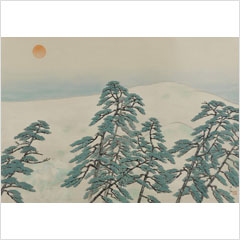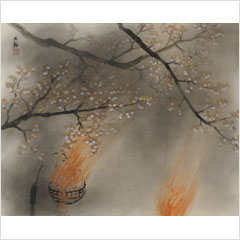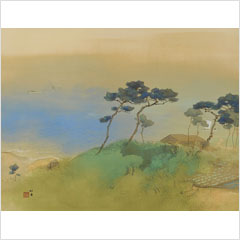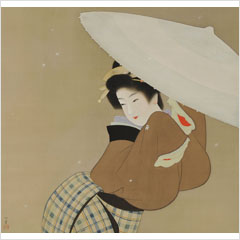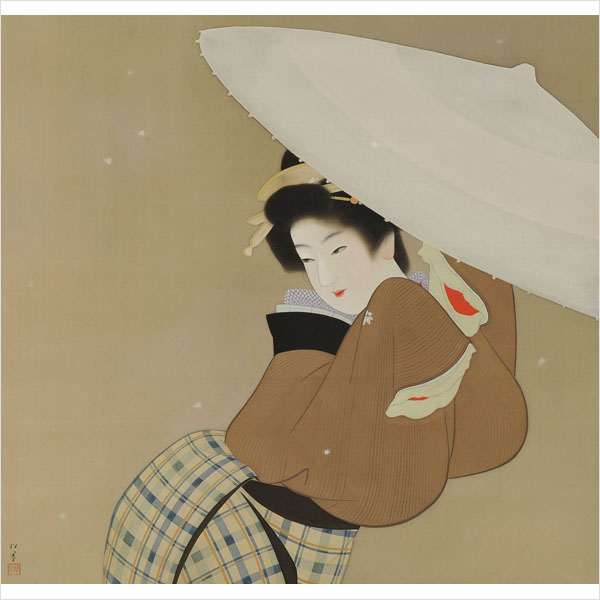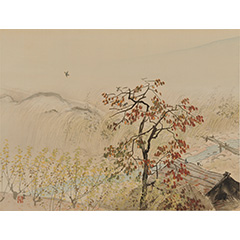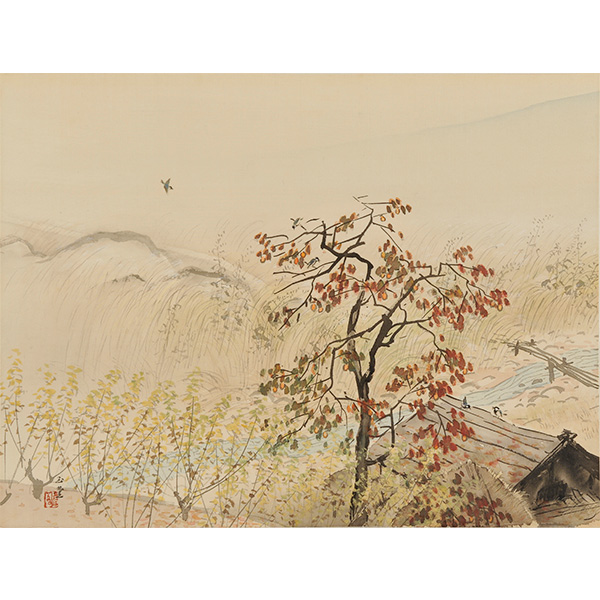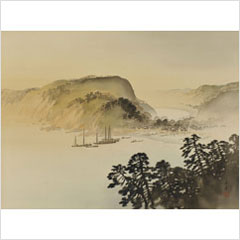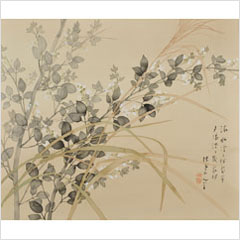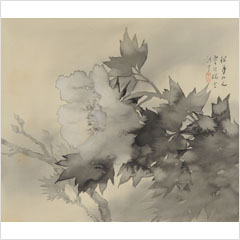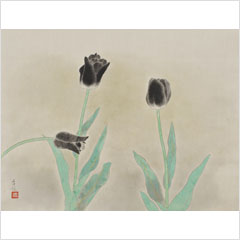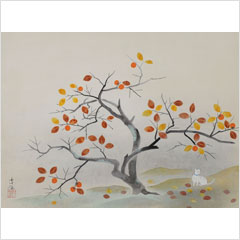
横山大観
東海の朝
1937(昭和12)年頃 紙本彩色・軸装 75.5×107.5cm
Taikan Yokoyama
Morning in the East Sea
Around 1937 (Showa 12) Color on paper, mounted on a scroll 75.5 × 107.5 cm
青々とした松の木々が悠々と伸び、その後方には朝日を浴びた白い砂浜が広がっています。大観独自の風格ある簡潔な表現によって、壮大な空間が感じられます。
1937(昭和12)年、大観は第一回文化勲章を受章しました。本作品もその頃に描かれた意欲作の一つです。大観は日本画壇を牽引しながらも、終生日本画の新しい可能性を追求し続けました。
The lush green pine trees stretch out majestically, and behind them, a white sandy beach bathed in the morning sun spreads out. Through Taikan's unique, dignified, and concise expression, a grand space is felt.
In 1937, Taikan received the first Order of Culture. This work is one of the ambitious pieces created around that time. While leading the Japanese art world, Taikan continued to pursue new possibilities in Japanese painting throughout his life.

